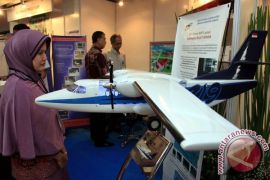On December 29, 2023, the first launch service tower was completed at the Hainan International Commercial Aerospace Launch Center, marking a key step forward in building the launch capacity of China's first commercial aerospace launch site. On December 10, a Hyperbola-2 methane-liquid oxygen reusable verification rocket was launched successfully, marking the first recovery of reusable carrier rockets in China.
Continuous implementation of relevant policies has steered China's commercial space industry into a fast lane of development. Many industry insiders believe that China's space industry has already reached the first stage of commercialization in many areas. However, challenges coexist alongside achievements, which calls for breakthroughs.
Initial Concentration of the Space Industry
Commercial space activities are non-governmental profit-seeking activities featuring allocation of technology, capital, talent and other resources according to market rules. The realm is an important force for the innovation and development of China's space industry. Private enterprises account for about 92 percent of China's commercial space companies.
On November 26, 2014, the State Council released guidelines on social investment in the commercial space industry, which stated that "private capital is encouraged to participate in the construction of national civil space infrastructure, and companies with the intention to join the space industry are allowed to make massive private investment." Since then, China's commercial space industry has developed for nearly 10 years.
In recent years, even more preferential policies have been released to drive the commercial space industry. According to incomplete statistics, more than 10 relevant policies have been issued since 2014. With that encouragement and support, the once relatively obscure space industry has gradually opened up. Furthermore, the boom of foreign commercial space companies led by SpaceX has resulted in a market demonstration effect for Chinese commercial space companies including Galactic Energy, LandSpace, iSpace, and Guodian Gaoke.
To seize the important opportunities brought by commercial space development, several Chinese cities such as Beijing, Xi'an, Shenzhen, Shanghai, Wuhan, and Ningbo have successively formulated relevant action plans or support policies to promote the development of the commercial space industry, accelerate the layout of the entire space industrial chain, and make breakthroughs in key and core technologies. Commercial space industrial parks have sprung up, shaping the concentration of the space industry.
Policy support and guidance has helped the growth of the industry. According to a report released by the Institute of Future Astronautics (FutureAerospace), the number of commercial space enterprises registered and effectively operating in China had reached 433 as of late 2022, with 43 commercial satellite constellation programs already implemented in areas such as commercial communications, remote sensing, navigation, and technology verification.
At the same time, China's commercial space industry has made new breakthroughs in technological innovation. For example, the launch of Zhuque-1 marked the first attempt made by a Chinese private space company to send a carrier rocket into space, and Zhuque-2 became the world's first liquid oxygen methane rocket successfully launched into orbit. With the successful launch of the Hyperbola-1 carrier rocket, iSpace became the world's third and China's first private company to launch a rocket into orbit.
According to data from Ai Media Consulting, from 2015 to 2021, China's commercial space industry maintained an average growth rate of 22.3 percent and is expected to grow to more than 2.3 trillion yuan (about US$320 billion) in 2024. Research firm Taibo Intelligence forecast the overall scale of China's domestic commercial space market to reach 2.8 trillion yuan (about US$389 billion) by 2025.
Promoting Coordinated Development of Derivative Industries
Divided according to the industrial chain, the upstream commercial space industry includes rocket manufacturing, satellite manufacturing, and related supporting equipment. The industry's midstream involves satellite launching and ground equipment manufacturing. Downstream is defined as terminal application and the service market. Traditional application scenarios include communication, navigation, and remote sensing, while emerging application scenarios include satellite internet, space travel, space mining, and deep space exploration.
"The industrial chain of China's commercial space industry has already taken shape," commented Gu Xingfa, an academician with the International Academy of Astronautics and the International Eurasian Academy of Sciences and president of the Chinese National Committee for Remote Sensing. "Driven by demand, policy, and technology, the development of the industry has indeed entered a critical stage."
Research from Sealand Securities, a wealth management platform, has divided the commercial space industrial chain into an upstream of satellite research and development, midstream of rocket launch services and ground equipment manufacturing, and downstream of satellite applications and services. So far, several private enterprises have been cultivated within each link of the industrial chain and have interacted with state-owned enterprises to form a preliminary industrial ecology, which is improving gradually.
In terms of commercial value, data from Ai Media Consulting showed that by the end of 2021, ground equipment manufacturing and satellite application and operation occupied the highest proportion of the market size among all links of the commercial space industry with each contributing 45 percent of revenues. They are the links of the commercial space industry that became profitable first. Meanwhile, satellite manufacturing and launch services in the upstream of the industrial chain remain at the preliminary stage, with both contributing about 10 percent of revenues.
Thus, the capital market is also gradually clarifying the direction of the commercial space industrial chain for the future. When a commercial rocket is launched today, satellite manufacturing and the rocket launch industry represent only 10 percent of the value across the entire space industrial chain, indicating that tremendous space remains for exploration with regard to the key parts and components for rockets and satellites.
"Without good products in the supply chain, there would be no good system integration products," said Yang Yiqiang, chairman and president of CAS Space. He also identified rockets and satellites as still the hotspots for investment in China's commercial space industry. However, many rocket and satellite companies have already emerged, and some have assumed leadership positions within the sector. The continued influx of capital will probably cause internal friction between those companies. Therefore, investors might want to focus more on the upstream of the industrial chain (e.g. engines, components) as well as on satellite applications in the downstream (e.g. navigation, remote sensing).
A space industrial chain consists of many links. From R&D and launch in the upstream to operation and application in the downstream, almost every link can create a market with an annual output of 100 billion yuan (US$14 billion). Zhang Shijie, chief scientist at Galaxy Space, noted that new commercial space companies have played a lead role in key links of the commercial space industrial chain thanks to their expertise and established an effective business operation model, which has contributed to the large-scale development of the commercial space industry.
Chen Xiaohong, an academician with the Chinese Academy of Engineering, once proclaimed that data is one of the core elements of the modern industrial system, the power source for the new engine of the digital economy, and the frontier of global digital competition. The commercial space industry, one of the main advancement trends of the technology industry in the era of the digital economy, can help the digital economy break through geographical restrictions, promote in-depth development of the industrial internet for people from all walks of life, and accelerate the digitization of the industry. Especially in the areas of satellite information and space technology, satellite data can enrich application scenarios and innovate business models, which will effectively empower the digital transformation of society and the development of the digital economy while facilitating construction of digital governments.
Financing Difficulties and Cost Obstacles
Although broad prospects for the development and application of the commercial space industry have emerged, many difficulties remain hindering business model maturation and large-scale development. Although the commercial model conceived by SpaceX is feasible, in essence, it does not change the industry's characteristics of "hardcore technology," namely, high costs, high risks, and long cycles.
"The commercial space industry is essentially space activities for profit," opined Ji Haibo, deputy general manager of iSpace and chief designer of its liquid-propellant rockets. "It took SpaceX more than 20 years to make a profit. Such a long development cycle is facilitated by the patience and persistence of the company and capital." He considers it necessary to tackle numerous bottlenecks restraining China's private commercial space industry to make it a market-oriented prosperous industry with considerable dividends.
But from the perspective of economic scale and overall corporate valuation, China's commercial space industry is still relatively small, with very few companies making any profits with rockets and satellites.
"The biggest obstacle hindering the development of the commercial space industry is the high launch cost," commented Ji. The same goes for all launch vehicles. The cost of rockets must come down to cut the cost of launching satellites into the sky, which will reduce costs for satellite operators. The reduced cost will in turn accelerate satellite networking, providing consumers access to satellite internet at a higher speed with a lower cost. Such a development would make the commercial logic of the commercial space industry complete and functional. For everyone involved in the industry, the only path to the maximum input-output ratio is realization of reusable carriers, including rockets.
Ji also noted that the focus of competition in China's private commercial space industry has shifted from launching rockets into the sky to reducing the cost of launches and ensuring sufficient capacity and flight reliability. In essence, it has entered a stage of competition in services.
Liu Baiqi, founder and CEO of Galactic Energy, discussed the factors restraining the development of China's private space industry in an interview. "The main factors are financing difficulties and limited infrastructure resources," he said. "The rapid flow of human resources and kinks in the supply chain are also major restraints."
Most space talent is still concentrated in state-owned enterprises, and several founders of private commercial space companies left a position at a state-owned enterprise. Without stable human resources, private commercial space companies face problems such as insufficient innovative R&D capabilities.
"Policy has never been the key factor affecting the development of the industry," commented Niu Min, founder of FutureAerospace. "The current shortfall is capital investment." Seeking to identify the essence of the business, Niu sees satellites as a core value of the commercial space industry. The economic value it creates must be profitable enough to cover the costs, he explained, and only when costs are covered will the loop of the business model close. However, the loop is still wide open for more Chinese private commercial space companies.
Activating a Trillion-Yuan Market
As a new business form within the space industry, commercial space activities feature rapid upgrading, high economic returns, and strong industrial synergy. They represent an extremely important new growth pole for the Chinese economy as well as important support for China to evolve from "a major player" to "a major power" in the space industry.
According to a prediction by Taibo Intelligence, China's commercial space sector will be in a golden era of development from 2023 to 2028 with an estimated market scale of 2.8 trillion yuan (US$389 billion) in 2025. Furthermore, the continuous integration of communication, navigation, and remote sensing, coupled with increasing demand for industry applications, should ensure continued expansion of application scenarios.
"China's private commercial space sector will continue to grow," said Niu Min. "After nearly 10 years of development, the Matthew effect (rich getting richer and poor getting poorer) has happened in the industry, which has basically determined a competition pattern of more capital invested in leading companies. However, industry is developing in the direction of maturity. This realm is expected to grow rapidly in 2024. By 2027, China will embrace the era of a space economy at a larger scale."
In Niu's view, China will enter the new era when three things happen: First, satellite constellations are built on a large scale, carrier rockets launched with high intensity, and low-cost large-scale liquid-propellant rockets recovered and reused. Second, more than 100 billion yuan (US$14 billion) is invested in the commercial space industry. Third, the next-generation space economy would emerge.
"The commercial space industry has bright prospects," concluded Liu Baiqi. "The continuous progress of technology and increasing market demand will likely push the industry to grow rapidly in the next few years."
SOURCE China Report ASEAN
Reporter: PR Wire
Editor: PR Wire
Copyright © ANTARA 2024












